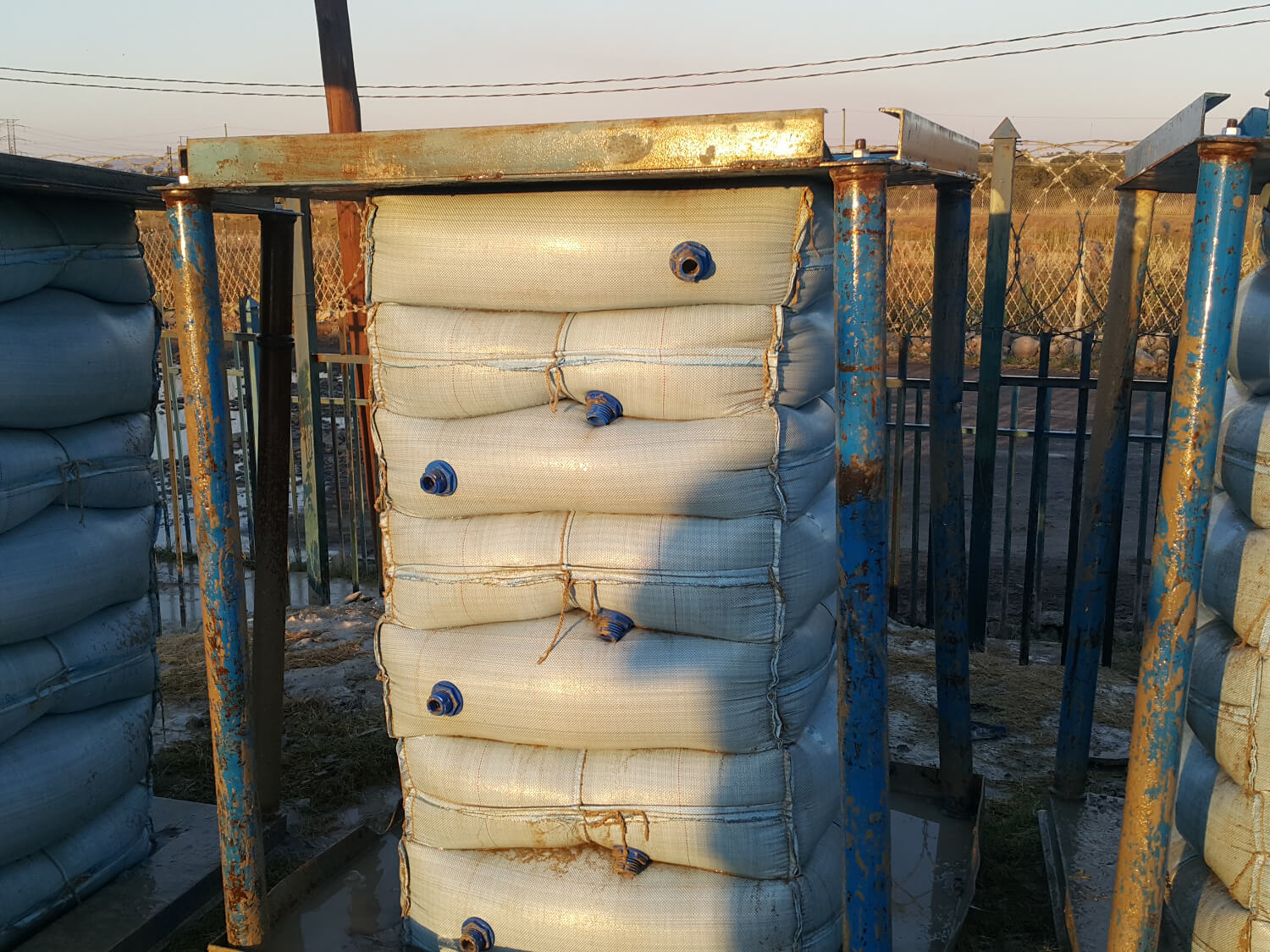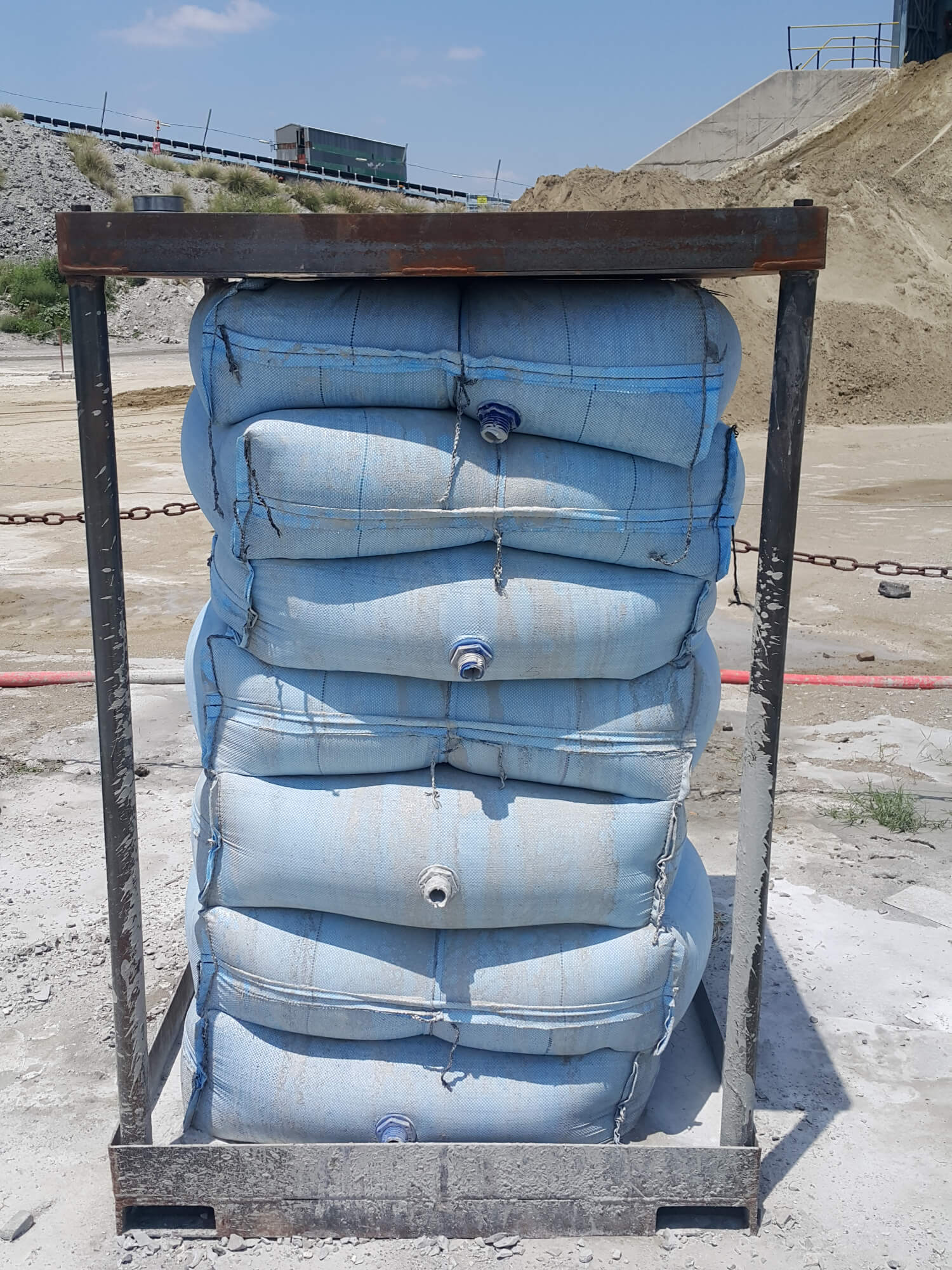Rock Fill:
- Placement of waste rock into the mining void. Generally undertaken using trucks and gravity, but sometimes placed or pushed up using LHDs.
- Development or run-of-mine waste (sometimes imported waste).
- Load Haul Dump (LHD) loaders, haul truck or conveyor.
- Suitable as a working platform or for secondary stopes. Cannot be exposed vertically or under-cut.
- Little quality control, highly variable particle size.
- Relative cost: Low.
Cemented Rock Fill:
- Cementitious slurry applied to waste rock. Systems vary but slurry is added to the waste rock, is mixed and then placed into the stope using a truck or LHD.
- Ideally crushed and screened rock, development, or run-of-mine waste (sometimes imported waste). Particle size optimisation required to maximise particle-packing density.
- LHD or haul truck. Cementitious slurry via agitator truck or slickline from surface.
- Possible to achieve strengths >4 MPa depending on mix. Vertical exposure.
- Size manipulation, mixing systems and deposition method greatly affects the final product quality.
- Relative cost: Low to High. Trade-off between capital and operating costs.
- Excellent for: Filling voids which will be exposed during future mining.
Hydraulic Fill:
- Hydraulic disposal of tails into stope, with or without Solids will settle and require topping up to full on several occasions. Fill fence or weep-bags designed to allow water to escape.
- Coarser than paste fill. Often requires hydro-cyclone (or similar) to modify Particle Size Distribution (PSD).
- Reticulated from surface. Contained behind fill fence or in weep-bags.
- The backfill dewaters during placement so increases demand on mine dewatering system. Requires topping up as backfill dewaters. Water cannot be allowed to accumulate in the stope as this poses a risk of failure or inundation to the mining operation.
- Good quality control possible, susceptible to binder segregation during dewatering.
- Relative cost: Low cost for a hydraulically delivered product but cement cost is high when required.
- Excellent for: Establishing working platforms and vertical exposure where mine water is not considered a problem.
Paste Fill/ Cemented Aggregate Fill:
- Binder added to whole-stream tailings, with or without aggregate and reticulated into the mine void.
- Minimum 15% passing 20 µm.
- Reticulated from surface. Contained behind fill fence or weep-bag.
- High quality control, homogenous product.
- Relative cost: Capital cost generally higher but operating costs lower than for hydraulic fill. Costs must be traded off vs backfill quality.
- Excellent for: Stabilising voids and backfilling workings and filling voids which will be exposed during future mining exposures.

